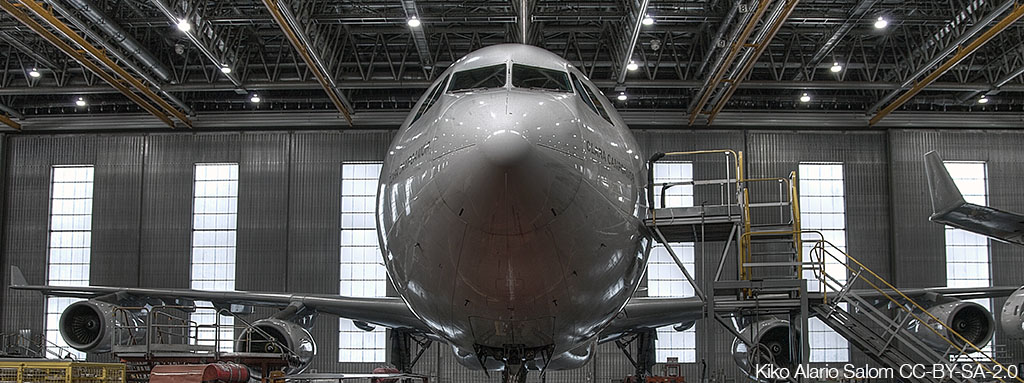We are used to seeing aircraft in movement. It is not surprising then that one of the key elements of an aircraft’s profitability is optimising the number of flight hours. However, we think that aeroplanes sometimes rest. What happens to them when this occurs?
An aeroplane may remain inactive for a long time due to many reasons. The aircraft will then require a series of maintenance tasks to ensure all its elements are conserved and to make sure it can fly properly once it is put back into service. These tasks depend on both the physical place where it will be stored – whether it is a closed or open space – and the weather. The needs of an excessively dry location are not the same as those of a very damp place. Some tasks are basic and common to all aircraft to conserve them and ensure they work properly once they are needed again.
The aeroplane should be parked in such a way so as to allow the passage of maintenance and safety personnel, if necessary. Moveable parts should be restrained and blocked, especially landing gear, to avoid any accidents. Pneumatic tyres can be changed and replaced with used ones to avoid deformations or they can be moved every few days to ensure the same purpose. Additionally, maintenance tasks are carried out on the shock absorbers’ oil and air.
It’s very important to disconnect the electrical system. There are static dischargers to discharge any voltage left in the aeroplane. These are conductor rods located at some points on the surface of the aeroplane’s structure to ground the aircraft to a mass through a cable or earth connection. These should be protected while it is parked by placing some covers over them.
Any foldable or moveable elements, such a doors, fairings, landing gear, ramps or controls, are lubricated to avoid deterioration and corrosion inhibitors are applied to any areas that need them.
Rainwater, dust, birds, insects or other animals that might enter into or nest inside the aeroplane’s ducts could harm the aeroplane’s operativity and cause damages. It is therefore important to prevent this by placing adhesive plastic sheets to cover openings.
Any loose elements inside the aircraft like life vests, first aid kits or any element that may expire, such as oxygen bottles, are removed and stored so they can be kept under control. Batteries and magnetic detectors are also removed and stored.
The fuel tank is inerted to place it out of service and prevent any kind of reaction that could endanger the material and personnel involved. For their part, great care should be taken to prevent moisture in the engines. To achieve this, a humidity-absorbing material is used and the engines are monitored by a series of sensors.
Advantage is taken of the period of inactivity to clean and replace oil and fuel filters. A general cleaning of the aircraft’s interiors is also done, emptying water and waste tanks, which should be suitably disinfected. Similarly, the aircraft’s exterior surfaces are cleaned.
A general visual inspection of the fuselage is conducted weekly to ensure there are no leaks of fluids, that all openings are properly covered and that the propellers, if any, maintain the right oil levels.
Maintenance tasks are repeated periodically on a weekly, fortnightly or monthly basis depending on the time the aeroplane will remain out of service. A series of “de-conservation” tasks are carried out to bring the aeroplane back to its original state. These ensure it is ready to fly, in addition to maintaining and ensuring quality and safety levels at all times.



